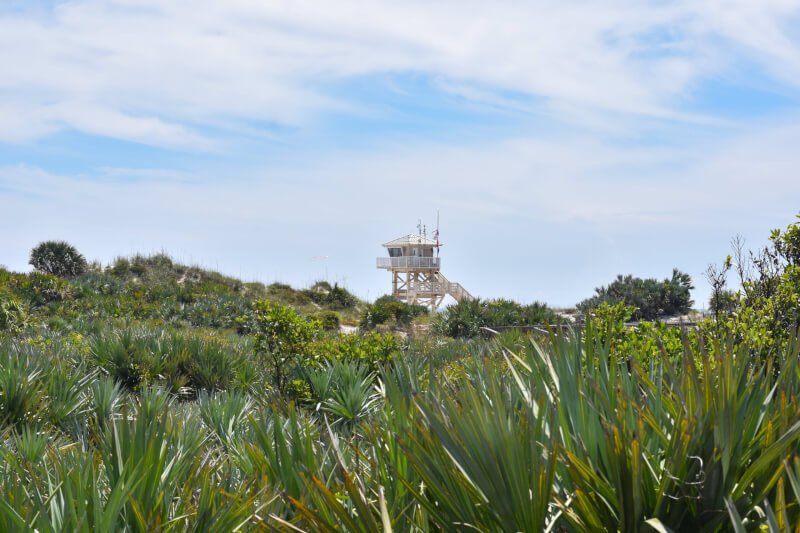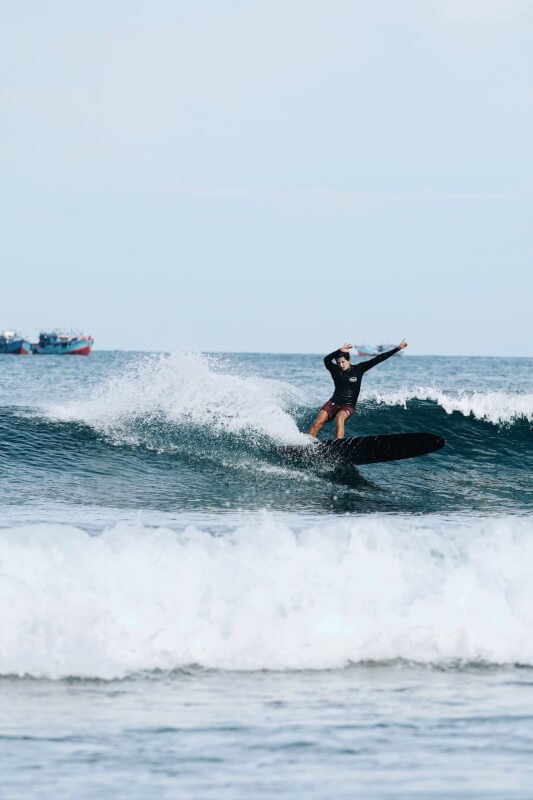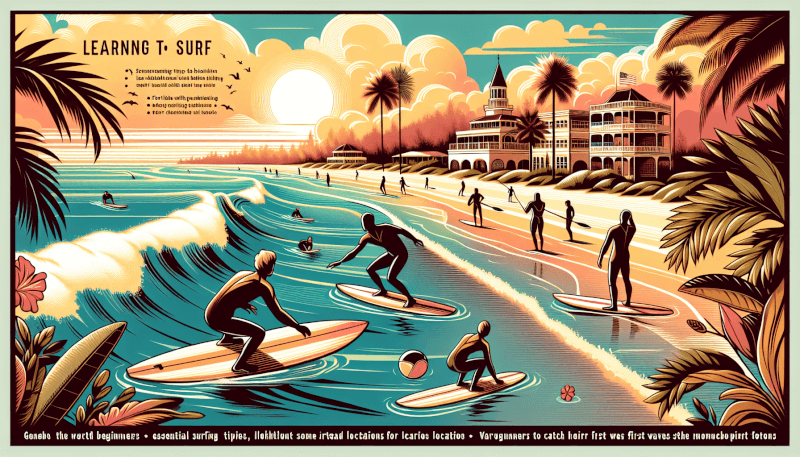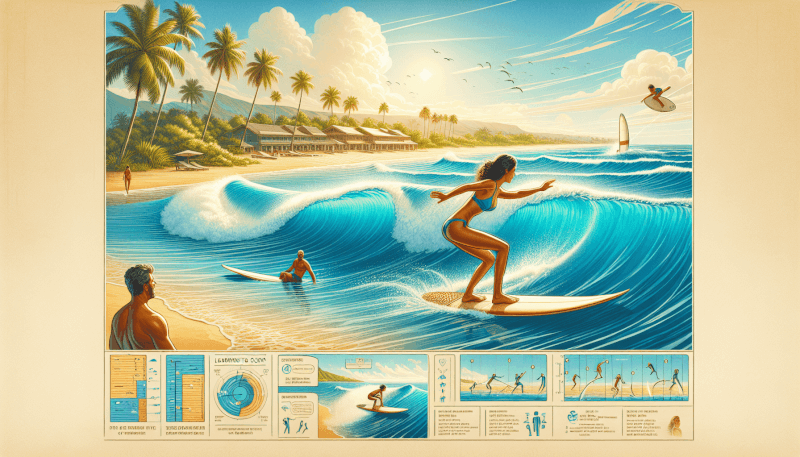Imagine the warm sunshine on your face, the soothing sound of waves crashing against the shore, and the exhilarating feeling of riding the perfect wave. If you’ve ever dreamed of learning to surf, Florida is the ideal place to start your wave-riding adventure. With its pristine beaches, consistent surf breaks, and vibrant surfing culture, the sunshine state offers a wide range of opportunities for both novices and experienced surfers alike. So grab your board and dive into this beginner’s guide to surfing in Florida, where you’ll discover everything you need to know to catch your first wave and embrace the thrill of the ocean.
Choosing the Right Surf Spot
When it comes to learning to surf in Florida, choosing the right surf spot is crucial. The first thing you need to consider is the wave conditions. As a beginner, you’ll want to look for spots with smaller, mellow waves that are more forgiving. Check the surf reports and look for spots that have consistent waves in the 2-4 foot range.
Another important factor to consider is finding beginner-friendly spots. These are usually beaches with a more gradual sand bottom. Avoid spots with a rocky bottom as they can be dangerous for beginners. Look for beaches that have a wide open shoreline with plenty of space for you to practice and learn without feeling crowded.
Additionally, it’s important to be aware of any local regulations. Some beaches have specific surf zones or designated areas for surfers. It’s a good idea to familiarize yourself with these regulations to ensure you are surfing in the right areas and not interfering with swimmers or other beachgoers. You can usually find this information posted on signs at the beach or by checking local surf websites.
Getting the Right Gear
Once you’ve chosen the right surf spot, it’s time to get the right gear. Surfboard selection is key to your success as a beginner surfer. Start with a longboard or a funboard, as these provide better stability and are easier to paddle and catch waves with. Avoid using shortboards as they require more skill and balance.
When it comes to choosing the right wetsuit, it’s important to consider the water temperature in Florida. In the warmer months, you might be able to get away with just a rash guard or a thin wetsuit top. However, during the winter months, the water can get quite chilly, so a thicker wetsuit is necessary to keep you warm. Choose a wetsuit that fits snugly but allows for freedom of movement.
In addition to a surfboard and wetsuit, there are other essential equipment items you’ll need. A leash is a must-have, as it keeps your surfboard attached to you in case you fall off. Wax is also important to provide traction on the board’s surface. And don’t forget sunscreen to protect your skin from the Florida sun.

Understanding Ocean Safety
Before you hit the waves, it’s crucial to understand ocean safety. One of the most important things to learn about is rip currents. These are powerful, fast-moving channels of water that can pull you away from shore. It’s essential to know how to identify and avoid rip currents. If you do get caught in one, remember to swim parallel to the shore until you are out of the current’s pull.
Another key aspect of ocean safety is knowing how to swim. Make sure you are a confident swimmer before attempting to surf. Practice your swimming skills in calm water before venturing out into the ocean. It’s also a good idea to take a basic water safety course or even sign up for swimming lessons if you need more practice.
Lastly, it’s important to stay aware of marine life. In Florida, there is a diverse range of marine species, including sharks and jellyfish. While the chances of encountering them while surfing are low, it’s always a good idea to be prepared. Familiarize yourself with common marine life in the area and learn how to respond if you come across them while in the water.
Taking Beginner Surf Lessons
Even if you are an adventurous and independent person, taking beginner surf lessons is highly recommended. Research local surf schools in your area and find one that offers lessons specifically tailored for beginners. These lessons will provide you with the foundation and knowledge you need to start surfing safely and confidently.
When choosing surf lessons, you have the option of group or private lessons. Group lessons are a great way to learn with others and make new friends who are also starting their surfing journey. Private lessons, on the other hand, offer more focused attention from the instructor and can be tailored to your specific needs and progress.
During your lessons, the focus should be on safety and technique. Your instructor will teach you how to properly paddle, how to catch and ride waves, and how to navigate the ocean. They will also emphasize safety rules and etiquette. Take advantage of the expertise and guidance of your instructor to ensure a solid foundation for your surfing skills.

Practicing Paddling and Balance
To become a skilled surfer, you need to develop your paddling and balance skills. Paddling is an essential part of surfing, as it allows you to catch waves and move through the water. Work on your paddling technique, focusing on using your arms and core muscles efficiently. Practice paddling in calm water and gradually increase your distance and speed.
Balance is another crucial aspect of surfing. Spend time on your surfboard in the water, practicing how to maintain your balance. Start by lying on your board and getting a feel for the way it moves with the water. Once you feel comfortable, try kneeling on the board and eventually progress to standing up. Make sure to engage your core muscles and keep your weight centered on the board.
To further enhance your balance skills, practice pop-ups on land. Pop-ups are the quick and fluid movements you make to go from lying down on your board to standing up on it. Practice this motion repeatedly on a soft surface, such as a yoga mat or grass, to build muscle memory and increase your speed and efficiency in the water.
Learning to Catch and Ride Waves
The ultimate goal of surfing is to catch and ride waves. As a beginner, it’s important to start with small, slow-moving waves. These types of waves are easier to catch and provide a more gentle ride. Aim for waves that are waist-high to chest-high, as they allow you to practice without feeling overwhelmed.
Timing is everything when it comes to catching waves. Position yourself correctly in the lineup, taking into account the direction and speed of the waves. Paddle with purpose and match your speed to that of the wave. As the wave approaches, use your arms to paddle and generate momentum. Once you feel the wave taking you, pop up quickly and smoothly to your feet.
There are various techniques for riding waves, depending on your preference and the conditions. Some beginners like to ride straight towards the shore, while others prefer to angle across the face of the wave. Experiment with different approaches to find what feels most comfortable for you. As you gain more experience, you can start practicing turns and maneuvers to add style to your surfing.

Understanding Surf Etiquette
Surf etiquette is an important part of the surfing culture and ensures a safe and enjoyable experience for everyone in the water. One of the key aspects of surf etiquette is respecting priority rules. The surfer who is closest to the peak or has been waiting the longest has the right of way. Always yield to those who have priority to avoid collisions and accidents.
It’s also crucial to be aware of other surfers around you. Maintain a safe distance from other surfers to avoid collisions. Communicate with other surfers through hand signals or verbal cues to prevent accidents and misunderstandings. Remember that everyone is sharing the waves, and a friendly and respectful attitude goes a long way.
Practicing good beach etiquette is just as important as surf etiquette. Keep the beach clean by picking up after yourself and disposing of any trash properly. Respect nature and the environment by not disturbing wildlife or damaging vegetation. Be courteous to other beachgoers and respect any designated areas, such as swim zones or surf-only areas.
Staying Safe in the Water
Safety should always be a top priority when surfing. One of the best ways to stay safe is to always surf with a buddy. Having someone else in the water with you provides an extra level of security and ensures that there is someone to help in case of an emergency. Plus, sharing the stoke of catching waves with a friend is always more fun!
Avoid overcrowded surf spots, especially as a beginner. More experienced surfers might be able to handle crowded lineups, but for beginners, it can be overwhelming and potentially dangerous. Look for less crowded spots or go during off-peak hours when there are fewer people in the water. This will give you more space to practice and reduce the risk of accidents.
It’s also important to know your limits. As a beginner, it’s natural to want to progress quickly and challenge yourself, but it’s crucial to know when to take a step back. If the conditions become too challenging or you start feeling tired or overwhelmed, don’t hesitate to call it a day. Listen to your body and trust your instincts when it comes to your safety in the water.

Dealing with Wipeouts
Wipeouts are inevitable in surfing, but knowing how to handle them can prevent injuries and keep you safe. The key is to stay calm and protect your head. As you fall, cover your head with your arms to shield it from impact. Keep your body relaxed to minimize the risk of injury. Remember, the ocean is powerful, but remaining calm and composed will help you navigate wipeouts more effectively.
Learning to fall properly is also important to minimize the impact. Try to fall flat and spread out your body to disperse the energy of the fall. Avoid falling with your hands outstretched, as this can lead to wrist injuries. Practice falling techniques on land to build muscle memory and increase your ability to react in the water.
Handling wipeouts with confidence is crucial for your progression as a surfer. It’s important not to let wipeouts discourage you or affect your confidence. Remember that even the most experienced surfers wipe out sometimes. Learn from each wipeout and see it as an opportunity to improve and grow as a surfer.
Enjoying the Surfing Lifestyle
Surfing is not just a sport; it’s a lifestyle. To fully embrace the surfing lifestyle, immerse yourself in the surf community. Spend time at local surf spots, get to know other surfers, and engage in conversations about surfing. Join local surf clubs or organizations to meet like-minded individuals and participate in events and activities.
Following surf culture and traditions is also a great way to connect with the surfing lifestyle. Explore surf movies, books, and magazines to learn more about the history and culture of surfing. Embrace the laid-back attitude, respect for the ocean, and love for nature that are an integral part of the surfing community.
Most importantly, embrace the joy of being in the water. Surfing is a unique experience that allows you to connect with nature and experience pure bliss. Take the time to appreciate the beauty of the ocean, the feeling of riding a wave, and the sense of freedom that comes with it. Cherish every moment in the water and let surfing become a lifelong passion.



